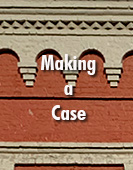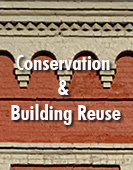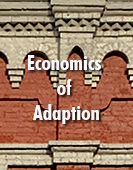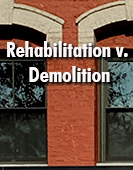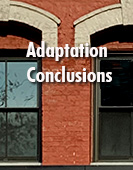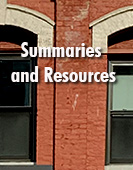- Heritage 101
- Advocacy
- Accessibility for Historic Places
- Climate & Sustainability
- Cultural Maps
- Heritage Place Conservation
- Heritage Policy & Legislation
- Homeowners
- Intangible Cultural Heritage
- Reconciliation
- Indigenous Cultural Heritage
- Setting the Bar: A Reconciliation Guide for Heritage
- 1. Heritage and Reconciliation Pledge
- 2. Acknowledging Land and People
- 3. Celebrating Days of Recognition and Commemoration
- 4. With a Commitment to Learn
- 5. Committing to Strategic Organizational Diversity
- 6. Mission-Making Room for Reconciliation
- 7. Possession, Interpretation, Repatriation and Cultural Care
- 8. Shared Decision Making
- 9. Statements of Significance and other heritage planning documents
- 10. Heritage Conservation Tools, Local Government Act
- Racism: Do Not Let the Forgetting Prevail
- Taking Action: resources for diversity and inclusion
- Webinars On-Demand
Climate Adaptation: Conclusions
Making a case to leverage existing and historic buildings for zero net carbon
5. Conclusions
First, a word of caution as we bring heritage structures into the decarbonizing fold: Damage can be caused to the cultural heritage values of the built environment, the fabric and performance of individual buildings, and the health and well-being of their occupants by inappropriate upgrading works carried out in the name of climate action. Such maladaptation, however well-intentioned, is wasteful and destructive and must be avoided in order to provide effective and durable solutions.14
Heritage-conservation professionals have strong insights to contribute to the planning, testing, and implementation of decarbonization, mitigation and adaptation that are needed to address climate-change disruption.
Experience in collaborative solutions and community planning, rationale development and vetting, envisioning of creative alternatives, logic sequencing of potential outcomes, and other skills developed by conservation architects and other professionals in their design and change-management practices for existing and historic properties—all will provide valuable foundational expertise for vulnerability assessment and the required complex matrix of decarbonizing and adaptation solutions.
Conservation professionals have developed advanced relevant skillsets of questioning further, delving deeper into root causes, and probing wider to gain a clearer understanding of building renewal projects and work with interventions to existing buildings – the single largest contributor to carbonization and Climate Chaos.
The conservation community can take a leadership role in the “Race to Net Zero,” using its members’ expertise in “managing change to existing buildings while retaining value”. This work must address the required dramatic acceleration of context-sensitive rehabilitation of the massive stock of existing, abandoned and heritage properties.
A large task will be the sustainable rehabilitation of heritage buildings from the modern era, which collectively, mainly due to their abundance, are the greatest greenhouse-gas “culprits”. The recent improvements in the understanding of embodied carbon in existing buildings underscores the necessity of “recycling” buildings rather than building new.
Life-cycle assessments help us better understand how the choices of materials and decisions to reuse and rehabilitate can dramatically decrease our carbon footprint. Interestingly, “mainstream” architecture and green-building construction have just recently started to embrace the fact that to “slay the carbon dragon,” we need to be mostly focused on “deep green” rehabilitation of existing buildings, not new green buildings.
Let’s conclude with a quote from the Climate Heritage Network’s statement on the Architecture 2030 Communique, being developed for COP 26:
“Worldwide, built heritage is being lost to climate change at an alarming rate. Along with cherished structures and places, the legacy of its creators is also lost. Cultural and social bonds are being weakened at a time when greater strength and resilience is needed most. The most vulnerable are being impacted disproportionately. The loss of built heritage is not limited to the destruction of iconic structures, far from it. It also means the loss of everyday buildings that continue to serve essential human purposes, the very fabric of our cities and towns.
Even more alarming than the rate of building loss to climate change is the wanton destruction of millions of useful buildings in the name of progress – even in the name of climate action. The climate crisis demands that every source of carbon pollution be zeroed out quickly. The world cannot afford to waste viable buildings. The first step in decarbonizing the building sector is to keep and use every building.
In 2030, 85% of existing buildings will still be standing and still be viable for use. This is a tremendous resource that requires global attention.
The quickest and surest path to a zero-carbon building sector is to conserve and appropriately adapt existing buildings. The principles and practices of heritage building conservation are of tremendous importance and usefulness as the world confronts climate change. They are the fundamental skill sets required to extend the low-carbon or zero-carbon service life of all existing buildings, not only heritage structures.”
Note:
The Climate Heritage Network serves as a clearinghouse for a wealth of resources on stewardship and climate adaptation, including:
- project case studies for climate retrofits of heritage and existing buildings;
- retrofit guidelines based on building science;
- easy-to-use life-cycle carbon calculators factoring both operational and embodied emissions;
- policy models for protecting existing resources and building decarbonization.
Founded in 2019, the Climate Heritage Network is a voluntary, mutual support network of arts, culture and heritage organizations committed to aiding their communities in tackling climate change and achieving the ambitions of the Paris Agreement.
Additional reading by Mark Thompson Brandt can be found here: Buildings and stories: mindset, climate change and mid-century modern, Journal of Architectural Conservation 2017
[14] Jacqui Donnelly, Senior Architect, Built Heritage Policy, Department of Housing, Local Government & Heritage, Government of Ireland.

